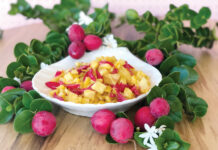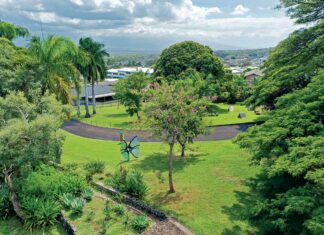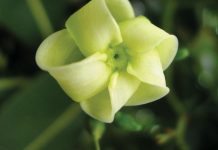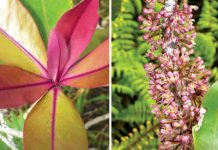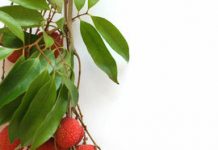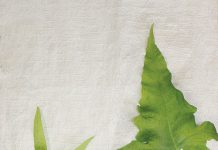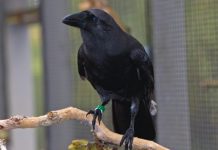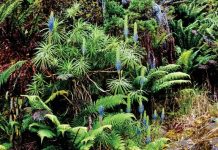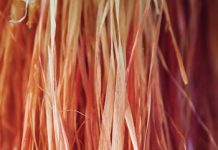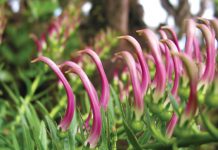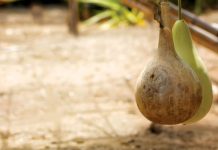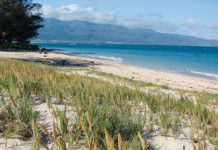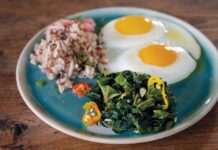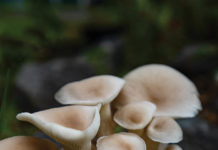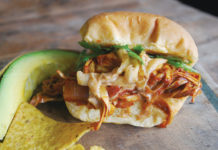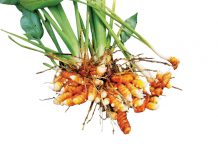Story by Shannon Wianecki | Photography by Bob Bangerter
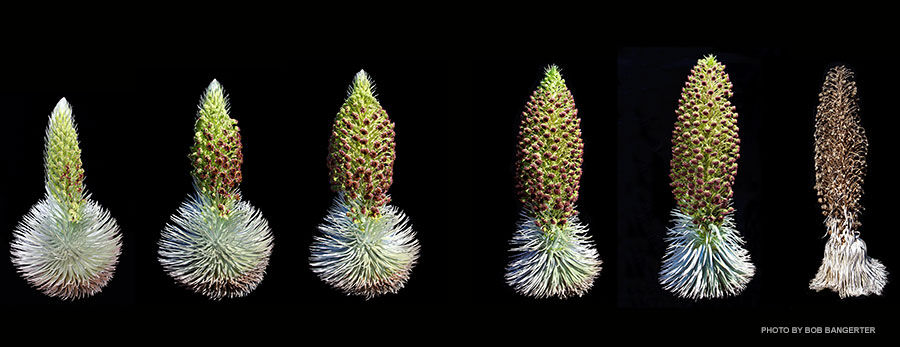
Summer is the prime time to observe an only-on-Maui botanical phenomenon: the blooming of the Haleakalā silverswords. These rare, endangered plants dot the sides of volcanic cinder cones, looking like pale green hedgehogs. They grow high up on Maui’s tallest summit — and nowhere else on Earth.
This remarkable endemic species is uniquely suited to its extreme environment. Spiky silversword leaves form a bowling-ball-sized rosette, and each leaf is covered in fine, reflective hairs. Both the geometry and hairs protect the plant against the intense solar radiation and frigid nighttime temperatures found on the 10,023-foot summit. Impeccably engineered, silverswords can live more than fifty years. Each plant produces a single flower stalk before it dies — a sort of swan song to its ecosystem. These stalks are something to behold. Towering up to six feet tall, they’re covered in hundreds of tiny fuchsia blossoms.
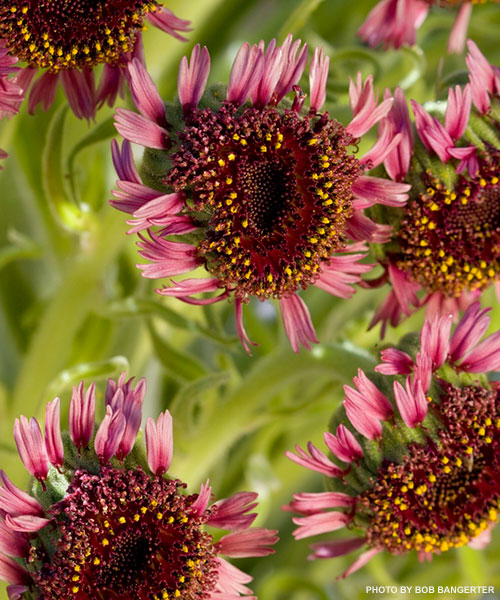
No one knows what triggers silverswords to flower. Some years — such as 2014 — many thousands burst into exuberant bloom. Other years, nary a petal emerges. When the wonky plants do bloom, they release a singular, sweet fragrance that summons pollinators across the vast volcanic landscape. Hawaiian Hylaeus bees come to bury their yellow faces in pollen. Native picture wing flies pay visits, as do tephritid fruit flies, whose larvae feed on silversword fruits — some of the only food available in this stark terrain.
During especially fecund years, you don’t even need to leave your car to catch a whiff of silversword perfume; mature plants crowd the summit parking lot. Find more by trekking down Keonehe‘ehe‘e (Sliding Sands) Trail. You can trample their fragile roots by stepping too close, so don’t leave the trail. But don’t miss this opportunity. Climate change is already taking a toll on Maui’s high-altitude inhabitants. Warmer temperatures and reduced rainfall have decreased silversword numbers, which makes witnessing the charismatic plants all the more precious.

